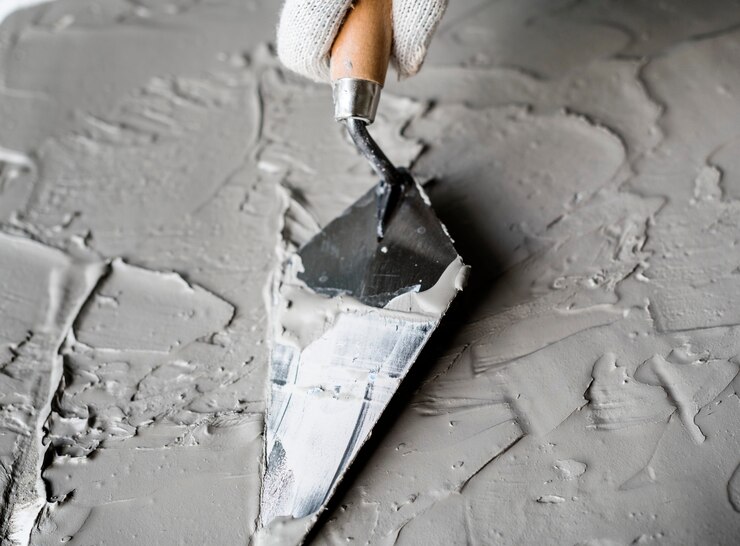Welcome to the world of concrete painting! As we transform drab surfaces into masterpieces, it’s only fair to acknowledge that sometimes, our painting endeavours encounter a few challenges along the way. In this blog post, we’ll guide you through the maze of troubleshooting common problems you might face during concrete painting in Melbourne.
The Case of Peeling Paint
Have you ever witnessed the unsightly phenomenon of peeling paint on your freshly adorned concrete walls? The culprit here often lies in inadequate surface preparation. Before diving into the colourful cosmos of colour, follow a complete paint removal process in Melbourne, ensuring the canvas is clean, dry, and free from dust or grease. A little extra TLC in the prep phase can save you from the heartache of peeling paint later.
Cracks: The Uninvited Guests

Imagine this: you’ve just finished painting, and cracks emerge, threatening the visual harmony you’ve worked so hard to achieve. Cracks are often the result of the concrete surface contracting or expanding due to temperature changes. To outsmart this challenge, consider using a high-quality elastomeric paint that can flex with the natural movements of the concrete, maintaining the surface intact.
Battling Blistering Paint Blues
Nothing bursts the bubble of painting bliss quite like the appearance of blisters on your concrete canvas. These pesky bubbles can arise from painting on a warm surface or applying paint under direct sunlight, causing it to dry too quickly. To prevent this, choose a cloudy day or schedule your painting escapade during the more excellent hours. Your paint will thank you by staying smooth and blister-free.
Stains: The Stubborn Stowaways
Stains on your freshly painted concrete are like unwelcome guests. The remedy lies in understanding the source of the colour. The first step is identifying the culprit, whether rust, oil, or water. Once identified, use the appropriate stain remover or primer to ensure your painted surface stays pristine and stain-free.
The Uneven Terrain: Roller Coaster of Paint Application

Picture this: you’ve meticulously applied paint, only to realize there are uneven patches marring your masterpiece. This common woe often stems from inconsistent roller pressure. Be gentle, and apply even pressure to ensure a smooth and uniform coat. Take your time, savour the process, and let the paint glide gracefully onto the surface.
The Fading Fiasco: When Colors Lose Their Luster
Picture this: the vibrancy of your chosen colours begins to fade over time, leaving your once-bright concrete canvas looking lacklustre. Wilting often results from using inferior-quality paints or neglecting the importance of UV-resistant formulations. Choose high-quality, UV-stable colours to ensure your colours stand the test of time under the sun’s relentless gaze, keeping your masterpiece radiant for years.
Tackling Tannins: Stains That Sneak Through
Tannins, those sneaky compounds you find in wood, can sometimes seep through the concrete and manifest as stubborn stains on your painted surface. Address this issue by applying a stain-blocking primer before you begin painting. This proactive step will create a barrier, preventing tannins from playing hide-and-seek with your colours and ensuring your paint job remains untarnished.
The Dilemma of Drips and Runs
The agony of witnessing paint drips and runs, ruining the flawless finish you envisioned! Fear not; this common woe often stems from overloading the paintbrush or roller. Practice the art of moderation by removing excess paint before application. Take your time, enjoy the process, and let each stroke be deliberate, ensuring your masterpiece emerges drip-free and ready to captivate.
Weather Woes: Rain, Humidity, and Their Effect on Paint

The weather can be both an ally and a foe in concrete painting. Rain during the drying process or high humidity levels can lead to many issues, including extended drying times, poor adhesion, and mildew growth. Check the weather forecast before you commence your painting endeavour, opting for days with mild temperatures and low humidity to guarantee a smooth and hassle-free application.
Mildew: Battling the Unwanted Bloom
Mildew, the unwelcome guest that can tarnish your painted paradise, often thrives in damp and shaded areas. Prevent this invasion by ensuring proper ventilation, especially in spaces prone to moisture buildup. Consider using mildew-resistant paints in areas susceptible to dampness, providing an extra layer of defence against the fungal forces that seek to mar your masterpiece.
Graffiti: Resurrecting Your Concrete Canvas
The frustration of discovering graffiti ghosting through your carefully painted masterpiece! Combat this urban art invasion by applying an anti-graffiti coating. This protective layer acts as a shield, allowing you to easily wipe away unwanted tags and street art without compromising the integrity of your original paint job. Your concrete canvas shall remain a testament to your creativity, untarnished by the ghosts of graffiti past.
Alligatoring Anxiety: Dealing with the Reptilian Texture
Witnessing an alligator-skin texture forming on your painted concrete is akin to discovering an unexpected reptilian guest. This phenomenon, known as alligatoring, occurs when you apply fresh paint over an improperly prepared or incompatible layer. To avoid this scary situation, ensure proper surface preparation and verify that new layers of lacquer are compatible with the existing ones. Harmonious paint removal in Melbourne will keep your surface smooth and reptile-free.
Bonding Breakdown: When Paint and Concrete Drift Apart
Picture this: your paint and concrete hit a rocky patch, leading to peeling and detachment. Fear not, for this emotional turmoil often results from poor paint adhesion. Prioritize surface preparation, ensuring the concrete is clean and free of contaminants. Additionally, consider using a bonding primer to strengthen the connection between paint and concrete, fostering a lasting and unbreakable bond.
UV Rays and Fading Finishes: A Deeper Dive
While we touched on the fading of colours, let’s delve deeper into the impact of UV rays. Prolonged exposure to the sun’s ultraviolet rays can not only fade colours but also compromise the structural integrity of the paint itself. Opt for colours with built-in UV protection, safeguarding both the vibrancy and durability of your concrete masterpiece against the relentless assault of sunlight.
Texture Tumult: Navigating the Rough Terrain

Discovering an unexpected rough texture on your once-smooth concrete surface can be disheartening. This textural turmoil often arises from using the wrong type of paint or applying it too thickly. Select colours specifically designed for concrete surfaces and follow recommended application guidelines to ensure a velvety finish. Your fingers will thank you as they glide across the tactile wonderland of a flawlessly painted surface.
Sealing the Deal: The Importance of Concrete Sealers
Sealing your painted concrete is like giving it a protective hug against the elements. Concrete sealers act as a shield, warding off moisture, stains, and the wear and tear of daily life. After completing your painting masterpiece, consider applying a high-quality concrete sealer to enhance longevity and keep your creation fresh and vibrant for years.
Wrap-Up: Happy Painting Trails
As we wrap up this exploration of troubleshooting common concrete painting problems, remember that the beauty of your painted surfaces lies not just in the hues you choose but in the journey of overcoming challenges. Embrace the nuances, learn from each stroke, and let your concrete canvas tell a tale of resilience and creativity.
Additional:
- Top 10 Wooden Door Design Ideas
- Top 10 Main Gate Design Ideas In 2024
- Top 8 Christmas Party Decoration Ideas For 2024


